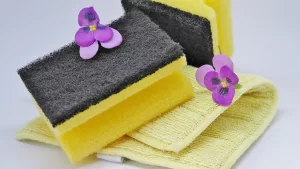
Maintenance and Care for Oil Radiators: Best Practices for Keeping Your Heater Clean and Efficient
Oil radiators are a popular choice for home heating, thanks to their energy efficiency, low noise levels, and low maintenance requirements. However, like all appliances, oil radiators require regular maintenance and care to keep them functioning at their best. In this article, we’ll explore the best practices for cleaning and maintaining oil radiators, as well as troubleshooting common issues.
Cleaning Your Oil Radiator
One of the most important aspects of maintaining an oil radiator is keeping it clean. Over time, dust and debris can accumulate on the surface of the radiator, reducing its ability to efficiently radiate heat. Here are some tips for cleaning your oil radiator:
-
Unplug the heater: Before cleaning your oil radiator, be sure to unplug it and wait for it to cool down.
-
Wipe down the exterior: Use a soft, damp cloth to wipe down the exterior of the radiator, removing any dust or debris that has accumulated.
-
Vacuum the fins: Use a vacuum cleaner with a brush attachment to clean the fins of the radiator. Be sure to use a gentle touch to avoid damaging the fins.
-
Clean the grill: Remove the grill on the front of the radiator and wipe it down with a damp cloth. If the grill is particularly dirty, you may need to soak it in warm, soapy water before wiping it down.
-
Reassemble the radiator: Once all the parts are clean and dry, reassemble the radiator and plug it back in.
Regular Maintenance for Oil Radiators
In addition to regular cleaning, there are a few other maintenance tasks you should perform to keep your oil radiator in good working condition. Here are some best practices:
-
Check the power cord: Inspect the power cord on your oil radiator regularly for any signs of damage. If the cord is frayed or otherwise damaged, it should be replaced.
-
Test the safety features: Many oil radiators have safety features that automatically shut off the heater if it becomes too hot or is accidentally tipped over. Test these features periodically to ensure they are working properly.
-
Store the heater properly: When you’re not using your oil radiator, store it in a cool, dry place away from moisture and direct sunlight.
Troubleshooting Common Issues
Even with regular maintenance, you may encounter issues with your oil radiator from time to time. Here are some common issues and how to troubleshoot them:
-
The heater won’t turn on: If your oil radiator won’t turn on, check that it is properly plugged in and that the outlet is working. If the outlet is working, try resetting the circuit breaker.
-
The heater is making strange noises: If your oil radiator is making unusual noises, it could be due to air bubbles in the oil or a loose part. Try bleeding the radiator to remove any air bubbles, or check the radiator for any loose parts.
-
The heater is not heating up properly: If your oil radiator is not heating up as well as it used to, it could be due to a buildup of debris on the fins. Try cleaning the fins as described above.
Oil radiators are a reliable and efficient way to heat your home, but they do require regular maintenance and care to keep them functioning at their best. By following the best practices for cleaning and maintaining your oil radiator, as well as troubleshooting common issues, you can enjoy the benefits of this type of heater for years to come.
For more heating and efficiency tips visit our blog
To see how much does it cost to run oil filled radiators visit low cost heating page

Hi, this is a comment.
To get started with moderating, editing, and deleting comments, please visit the Comments screen in the dashboard.
Commenter avatars come from Gravatar.